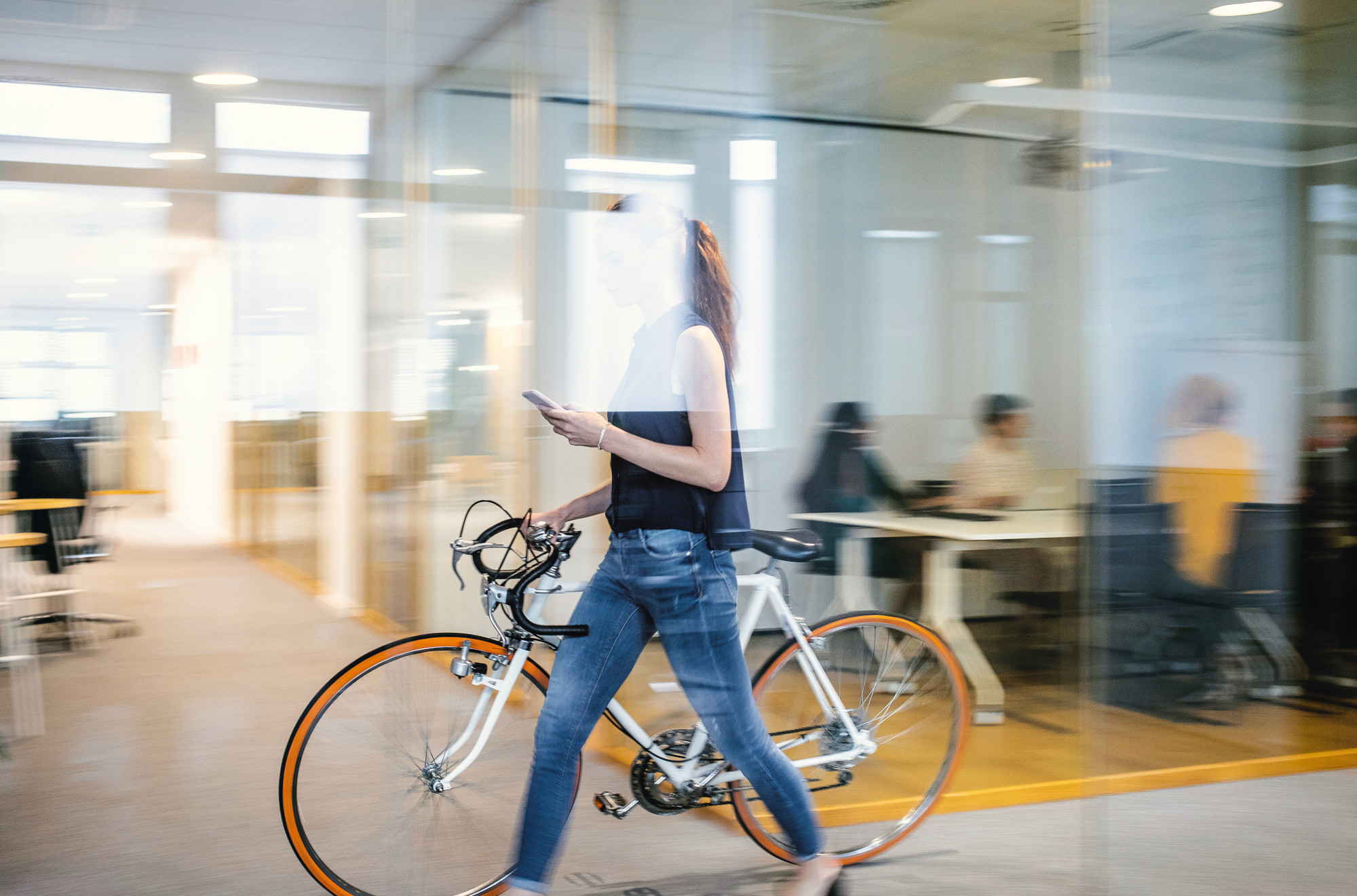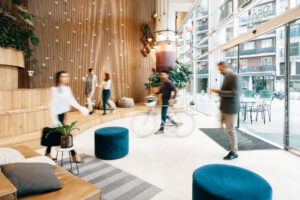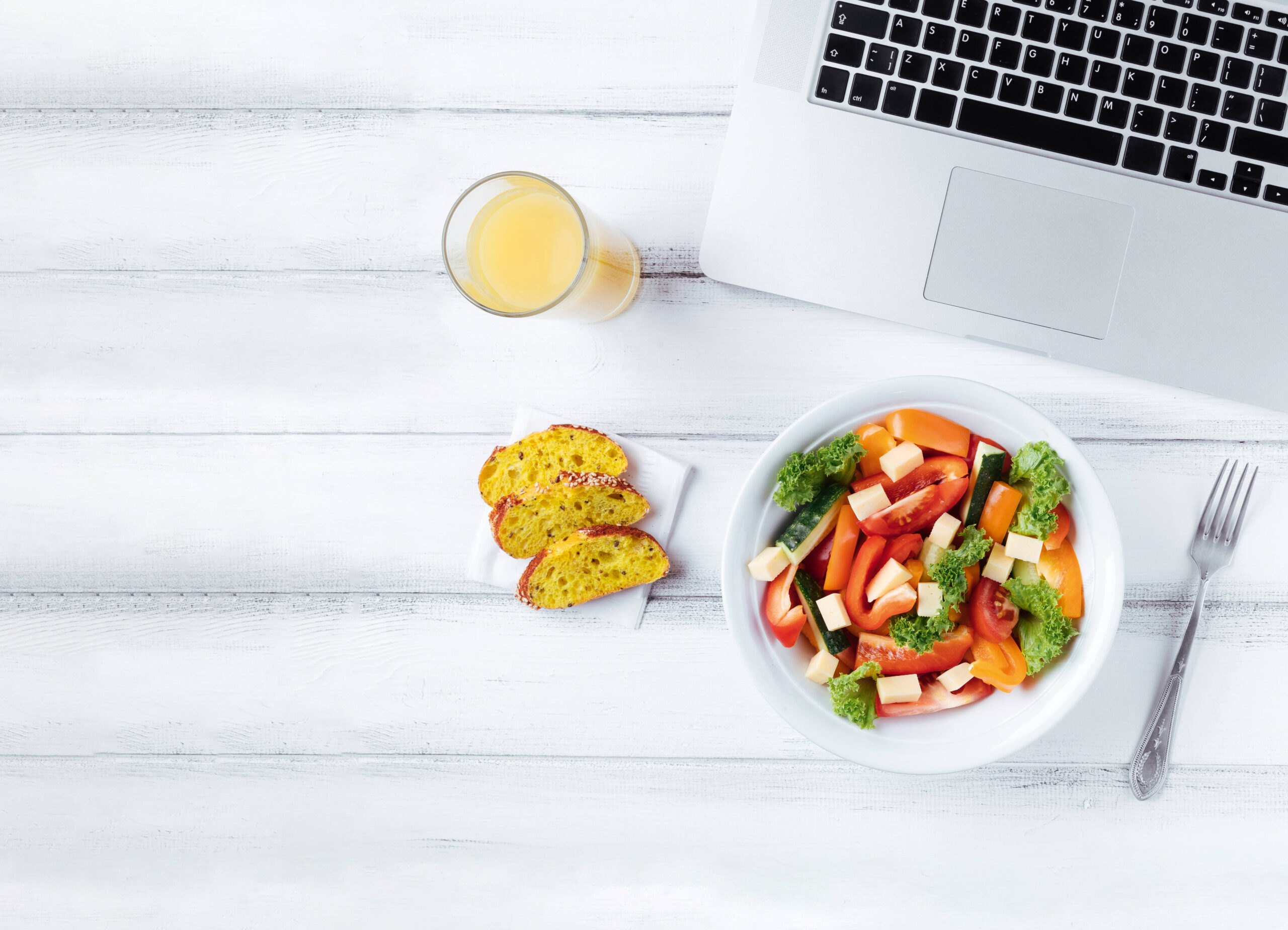Guide to building a healthy office.
By Wojciech Czaja, 11.02.2024

In tangible terms, important homework has been done in recent years by organisations, the planning sector and the office furniture industry– and they have created a lot of healthy offices. Now it’s all about tightening the last still remaining screws in relation to soft, intangible factors. This also includes healthy nutrition.
He recommends swallowing aspirin to prevent cancer, describes high heels as a risk for inflammation and even made a very drastic comparison in an interview once, saying: “We have studies that prove that movement is a major contributor to health. On the other hand, spending an entire day sitting in the office without moving at all is the same on a health basis as smoking a pack of cigarettes.“
US physician and oncologist David B. Agus, author of “The Lucky Years: How to Thrive in the Brave New World of Health” and “A Short Guide to a Long Life” is one of the world’s most controversial famous names of medicine. He has previously treated Steve Jobs, Lance Armstrong and Edward Kennedy, sees prevention as the key to the future and, yes, divides opinion with his provocative statements: on the one hand, they make tricky health topics accessible to the public and easy for anyone to understand; on the other, they also bring critics into the arena. But is there any truth to his provocations?
“I would be cautious about applying his aphorisms 1:1 to the world of work,” says Viennese health scientist Sonia Raviola. “But if you take a closer look at the activity of sitting, then David B. Agus’ statement does at least have a kernel of truth. Sitting continuously for eight hours, as was still officially the case with a typical office job a few years ago, doesn’t exactly have a positive impact on your physical and mental health.” In some cases, according to Raviola, sitting for too long without moving at all can lead to circulatory and metabolic problems. But the brain also suffers: “In a motionless body that remains in the same position for hours on end, the neurons and synapses work differently from in, say, a body that experiences variety at regular intervals.” Just like they say for apples: some movement a day keeps the doctor away.
For the classic office workstation, the expert therefore recommends a high-quality swivel chair with lumbar support and ideally with a mechanism that is adapted to the weight of the body and reacts dynamically to even the smallest movements. “The body has to remain in motion, both while seated and when moving between different postures throughout the day, such as sitting, standing, walking, lying and balancing.” This means that, if the work situation allows, team meetings and some desk work really should be carried out while standing. In some companies, activation of the body has even been introduced into restaurants. Anyone who wants to can have lunch at a standing table.
It is not only at the desk and in the canteen that movement plays an important role, but also in the yoga or fitness room, provided that this kind of space is available to employees. “It’s not about doing a workout, building muscles or working up a sweat with cardiovascular exercise,” says Raviola, “but about moderate mobilisation of the body, even if just for 20 minutes.”
In the interests of a healthy, transparent and authentic corporate culture, this space should also be used by senior and middle management, where possible. She continues: “And certainly not just in the morning and at the end of the working day, when most people have already gone home, but during the core working hours. After all, movement is a central pillar of the five sub-modalities that are important in behavioural and conditional prevention.”
These five sub-modalities, to use the technical term, include moving, nourishing, learning, resting and loving, which, in the context of work, can be translated into the sum of social contacts, beautiful moments and an aesthetic, visually appreciative environment. Only if all these five sub-modalities are taken into account and find expression in the workplace can you speak of a healthy office, in Raviola’s view. “A good, healthy, balanced menu in the canteen is just as important as a work environment with aesthetically pleasing furniture and products as well as the opportunity for upskilling in the form of coaching, training, seminars, conferences or educational leave. All of this contributes to a healthy workplace.”

If you ask people involved in occupational and health psychology at the moment, they will tell you that soft factors such as nutrition, movement and a social work climate in fact play a central role and are perhaps even the biggest lever for achieving a healthy, feel-good job now that many employers have well and truly done their homework with regard to an ergonomic, well-functioning workplace. “Healthy food in the workplace,” says Graz-based occupational and health psychologist Christine Korak, “is one of the most important and, at the same time, easiest parameters to implement.” Large companies with their own canteen need light, high-quality menus, while in smaller companies with up to 30 or 40 employees they should have the opportunity to prepare their own meals with the help of a specialist.
“But more and more often,” says Korak, “businesses are turning to external, sustainable delivery services – the likes of mjam, Foodora or Lieferando in the B2B sector. And the supply of green, healthy dishes delivered fresh to the office every day is growing all the time.” What usually happens is that the employer rents a suitable reheating oven with the monthly participation fee and employees, with a corresponding subsidy, can obtain regional, freshly prepared food for just a few euros. And yes, it takes more than just a green apple in the organic food box. Based on model and standard of quality, various certifications can be obtained for “green” cooking, ranging from Grüner Teller (Green Plate) to Grüne Haube (Green Toque).
Bernhard Kern, CEO of Roomware Consulting GmbH, even holds the view that the design and furnishing of social meeting rooms – specifically including cafés, restaurants and informal meeting places – present one of the key requirements and challenges that employers will increasingly face in the future. “A good canteen, beautiful and respectful furnishings, and an open and flexible corporate culture that allows you to work the whole day in the canteen with your laptop and caffè latte if you want are important assets that should not be underestimated.” According to Kern, these factors are important tools for recruiting and employer branding, especially in a market that is currently being shaped partly by employees due to the shortage of labour.
Salzburg-based occupational psychologist Christian Blind, who focuses on evaluating mental stress in the workplace, also advises companies to pay more attention than ever before to the work-life balance. “With the coronavirus pandemic, much of what we had constructed up to that point disappeared in one go. The meteoric rise of home-based work, new digital communication tools and extremely dynamic developments in recent years mean that we now have a lot to learn and establish again.” This is not only an investment in efficiency, productivity, fewer sick days and both subjective and objective wellbeing in the workplace, but also a necessary measure under the Austrian Employee Protection Act (ArbeitnehmerInnenschutzgesetz, ASchG), according to which it has been mandatory to conduct a regular physical and psychological evaluation of the workplace since 2013. “The only problem is that not all companies are aware of this,” says Blind.
As good as the average office has now become, as much as the focus is naturally on ergonomic furnishings, on good acoustics, on appealing lighting, on ecological building materials and on the proven health-promoting greening of indoor and outdoor spaces, which has now become part of planning practice – almost all experts see a clear need to catch up in one area, namely the indoor climate. The range of experiences in the industry includes too cold, too warm, too dry, too draughty and too intolerable. Even in many new buildings, the unanimous observation is that there are repeatedly climatic problems. “The indoor climate is probably the only parameter that does not come with an average value, on which basis it is also therefore not possible to make a generally valid, generally representative statement,” says Sonia Raviola. “That’s because temperature is perceived differently by everyone – partly due to physical condition and partly due to aspects of gender. The fact is that women and men fundamentally feel temperature differently for fat burning reasons.” The subjective perceived delta lies between two and five degrees Celsius.
So, what can we do? “Talk about it openly and respectfully, and deal with the issue constructively,” recommends Raviola. “Just as we have succeeded in meeting the demands of a healthy office in so many respects already, I am confident that this point too can still be solved – not with a universal solution, but with a catalogue of individual adjusting screws.”
Wojciech Czaja




